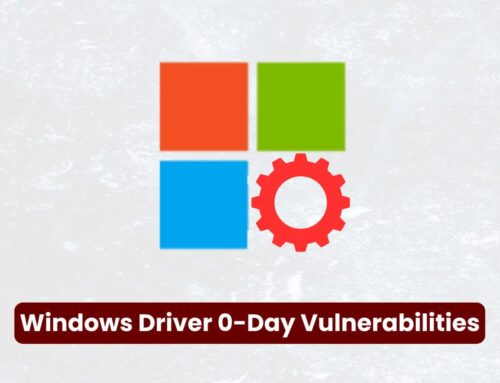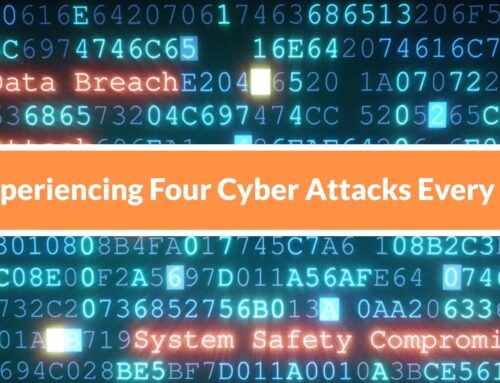
BulletProof Hosting Provider Qwins Ltd Fueling Global Malware Campaigns
In the relentless battle against cybercrime, one often overlooked but critically important player is the infrastructure provider. When these providers knowingly or unknowingly facilitate malicious activities, they become a foundational pillar for global threats. Recent revelations have exposed Qwins Ltd, a UK-registered entity, as a highly sophisticated “bulletproof” hosting provider that has become a central enabler for widespread malware campaigns, fundamentally altering the landscape of cyber threat infrastructure. This deep dive will dissect their operations, explore the malware families they support, and outline how organizations can defend against threats fueled by such providers.
The Anatomy of Bulletproof Hosting
Bulletproof hosting is a specialized service designed to tolerate or ignore content that would typically be banned by standard hosting providers. Its primary appeal to cybercriminals lies in its resilience against takedown requests, allowing illegal operations to persist online for extended periods. Qwins Ltd, operating under Autonomous System Number (ASN) 213702, exemplifies this model. By offering an infrastructure resistant to conventional law enforcement or cybersecurity interventions, they provide a safe haven for malicious actors. This robust infrastructure is crucial for maintaining the command-and-control (C2) servers, phishing sites, and distribution channels necessary for successful cyberattacks.
The business model of bulletproof hosting providers thrives on a deliberate laxity in enforcing terms of service, often turning a blind eye to abusive content as long as payment is received. This enables threat actors to host illicit content without fear of immediate disruption, making the task of dismantling cybercriminal operations significantly more challenging for cybersecurity professionals and law enforcement agencies globally.
Qwins Ltd: The Backbone of Malware Operations
Cybersecurity researchers have meticulously compiled extensive evidence, directly linking Qwins Ltd’s infrastructure to a myriad of high-profile malware families. This isn’t merely incidental hosting; it’s a dedicated architecture supporting persistent and pervasive cybercriminal activities. The scope of their involvement extends to:
- Lumma Stealer: A notorious information stealer capable of exfiltrating sensitive data, including login credentials, cryptocurrency wallet details, and browser information. Lumma Stealer consistently evolves, bypassing new security measures and maintaining a high success rate due to its sophisticated design and reliable C2 infrastructure.
- Amadey: A modular botnet primarily used for spreading other malware, performing DDoS attacks, and acting as a proxy. Amadey’s resilience is significantly bolstered by its ability to operate from bulletproof hosts, making takedowns exceedingly difficult.
- Other variants: While specific names were not provided in the initial alert, the language indicates a broader portfolio of malware operations benefiting from Qwins Ltd’s infrastructure. This likely includes various ransomware strains, banking Trojans, and other forms of infostealers that rely on stable and unmonitored hosting.
The continuous operation of these malware families, facilitated by Qwins Ltd, directly contributes to significant financial losses, data breaches, and reputational damage for individuals and organizations worldwide. Their role as an infrastructure provider escalates the global impact of these cyber threats, making them a critical piece in the overall cybercrime ecosystem.
The Challenge of Disrupting Bulletproof Hosting
Disrupting bulletproof hosting providers like Qwins Ltd presents unique challenges. Their operational models often involve legal ambiguities, quick infrastructure shifts, and a willingness to operate in jurisdictions with less stringent cybercrime enforcement. Traditional methods of takedown notices or legal actions are frequently met with resistance or evasion. Furthermore, their rapid ability to migrate operations to new IP addresses or even entirely different ASNs makes it a constant cat-and-mouse game for security professionals.
The discovery linking Qwins Ltd to specific malware campaigns provides a crucial piece of the puzzle, allowing for more targeted remediation efforts against the hosted threats, but the fundamental challenge of dismantling the bulletproof infrastructure itself remains a complex international effort requiring collaboration between law enforcement, cybersecurity firms, and global regulatory bodies.
Remediation Actions and Proactive Defenses
Organizations cannot directly shut down Qwins Ltd, but they can implement robust security measures to mitigate the risks posed by malware hosted on such bulletproof infrastructure. Proactive defense is paramount to protect against campaigns fueled by these resilient hosts:
- Enhanced Endpoint Detection and Response (EDR): Deploy EDR solutions capable of detecting and responding to advanced threats, including fileless malware and sophisticated information stealers like Lumma Stealer. These systems should monitor for anomalous behavior, process injection, and unauthorized data exfiltration attempts.
- Regular Security Awareness Training: Educate employees on phishing, social engineering tactics, and the dangers of clicking suspicious links or opening unsolicited attachments. Many malware campaigns originate from user interaction with malicious content hosted on bulletproof servers.
- Network Traffic Analysis and IoC Monitoring: Continuously monitor network traffic for connections to known malicious C2 servers, particularly those associated with ASNs like 213702. Implement threat intelligence feeds that include indicators of compromise (IoCs) related to Lumma Stealer, Amadey, and other relevant malware families.
- Patch Management: Maintain a rigorous patch management program for all operating systems, applications, and network devices. Many malware families exploit known vulnerabilities (e.g., CVE-2023-XXXX – placeholder for a recent, relevant vulnerability) to gain initial access, even if their C2 is bulletproof.
- Strong Access Controls and Multi-Factor Authentication (MFA): Implement the principle of least privilege and enforce MFA for all critical systems and accounts. This significantly reduces the impact of credential theft, a primary objective of information stealers.
- Backup and Disaster Recovery Strategy: Regularly back up critical data and test your disaster recovery plan. In the event of a successful malware infection, particularly ransomware, the ability to restore from clean backups is vital.
- Web Content Filtering and Mail Gateways: Utilize advanced web content filtering to block access to known malicious domains and IP addresses. Implement robust email security gateways to filter out phishing emails and attachments containing malware.
The Ongoing Battle
The identification of Qwins Ltd as a critical enabler of global malware campaigns underscores the dynamic nature of cyber threats. It highlights that the fight against cybercrime extends beyond just the malware itself and must encompass the underlying infrastructure that allows these threats to persist. By understanding the role of bulletproof hosting and implementing comprehensive defensive strategies, organizations can significantly enhance their resilience against the persistent and evolving tactics of cybercriminals. Collaboration between cybersecurity firms, law enforcement, and industry stakeholders remains essential to disrupt these robust, illicit networks and safeguard the digital ecosystem.





